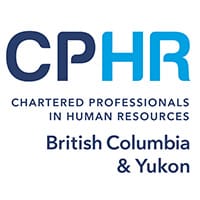As a manager, you have a lot of responsibilities. One of those responsibilities includes providing a safe and respectful work environment for your employees. This not only involves treating your employees with respect yourself – it also involves taking steps to prevent or correct observed bullying on your team.
If you discover aggressive behaviours amongst your team members, it is up to you to investigate and eradicate such conduct. In addition, in order to legally protect your company, it’s critical that you have appropriate policies and procedures in place to effectively respond to such issues, if and when they arise.
What is bullying and harassment?
Bullying and harassment are techniques designed to humiliate or intimidate a singled-out employee. These may include:
- Insults, threats or other verbal aggression
- Derogatory name-calling
- Dangerous or malicious hazing practices
- Vandalization of personal possessions
- Dissemination of defamatory or ill-intentioned rumours
Workplace power dynamics may influence such behaviours – such as a manager harassing their subordinate. However, co-workers at the same level can also bully and harass each other.
Regardless of who perpetrates it, any manifestation of bullying is wrong. As a manager, it’s important for you to understand that standing by and allowing such behaviour to continue makes you equally culpable.
Setting clear ground rules
You may never expect anyone on your team to be subject to verbal or emotional abuse in the workplace. Nonetheless, as a legally protective measure, it’s important that you have a clear policy in place to address this issue, if necessary. It’s equally important that everyone on your team receives clear training on these guidelines – and the consequences of breaking them. Making your team clear on your company’s lack of tolerance towards such behaviour can help to prevent it from happening.
Your policy statement should include:
- Definitions of bullying and harassment
- Statement of expectations surrounding workplace conduct and adherence to policy
- Description of behaviours that are forbidden in the workplace
- Workers’ duty to report inappropriate behaviour if observed or experienced
- Consequences perpetrators of bullying or harassment may face
- Protections of victims/witnesses for reporting such behaviour
- Categories of workers to whom the policy applies – permanent, temporary, part-time, contract, etc.
- Requirement of annual review of the policy by all workers
Performing an investigation
As an employer, it is your responsibility to take any reported incident of bullying or harassment seriously – and to investigate the issue. Your company should have fixed policies and procedures in place for how to respond to any such incidents. These guidelines should outline:
- Who will conduct the investigation
- How and when they will conduct it
- What they should include in the investigation report
- Any record-keeping guidelines surrounding the investigation
- Any required follow-up action – including defining a time frame in which to respond, taking corrective action, responding to adverse effects on the victim, etc.
Bullying creates a toxic work environment and can make employees feel unsafe. If an employer fails to respond swiftly and appropriately to address and resolve the situation, it can jeopardize their professional reputation and put them at risk for litigation.
An experienced employment lawyer can help you develop robust policies and procedures that protect your business. They can also guide you through any workplace investigations that may arise.


